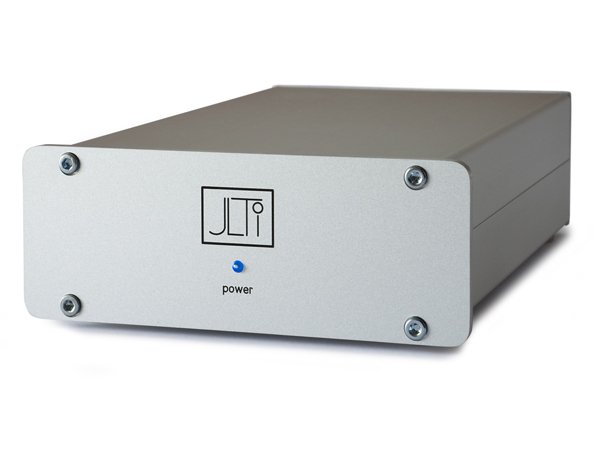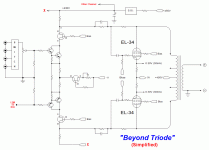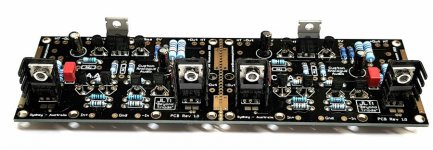Joe Rasmussen said:Know that due to F=BLi the driver is reproducing CH2 and not CH1.
DF96 said:If the speaker output were simply an acoustic version of the driving current then speaker designers' lives would be much simpler.
This is one of the difficulties with discussing things with Joe: he uses words to mean something different from what most people mean by them.Joe Rasmussen said:I never said that!
Hi John,
Not entirely true.
Then there is the needle in a haystack principle as you try to find those nuggets.
-Chris
Not entirely true.
Then there is the needle in a haystack principle as you try to find those nuggets.
-Chris
https://www.bksv.com/media/doc/be1447.pdf
Construction-wise, bootstrapping and guarding are used in many capsule buffers to get to the required impedance levels.
You can't bootstrap out noise, the diode biasing is still limited (noisewise) by the slope through the origin which is related to Is.
The charge amplifier puts the capsule into a short the highest distortion mode and as B&K showed a small negative capacitance minimizes the distortion. So what is the source of 10% distortion if the capsule has nothing to do with it? I don't have AES access. The 0.003% rules out any real capsule at reasonable SPL from simple geometry considerations.
BTW most commercial mics use 1-5G resistors and someone claimed a few up to 50G (this would possibly be problematic with FET leakage variation). I've only ever seen one or two recording mics that use bootstrapping.
The ability of the amplifier to cope with "distorted current" is known to those who understand electronics as 'output impedance' (the lower and more linear the better). For some peculiar reason you seem to prefer those amp technologies which raise output impedance, thus making the problem worse.
I thought we were enjoying a break from this silliness.
Fat chance, I've invited Joe numerous times to actually measure the distortion in the acoustical output of the driver but I see a smoke screen about that has already been lit.
I don't have AES access either, so maybe Richard can post the relevant snippet. I as well am questioning the values he stated.You can't bootstrap out noise, the diode biasing is still limited (noisewise) by the slope through the origin which is related to Is.
The charge amplifier puts the capsule into a short the highest distortion mode and as B&K showed a small negative capacitance minimizes the distortion. So what is the source of 10% distortion if the capsule has nothing to do with it? I don't have AES access. The 0.003% rules out any real capsule at reasonable SPL from simple geometry considerations.
BTW most commercial mics use 1-5G resistors and someone claimed a few up to 50G (this would possibly be problematic with FET leakage variation). I've only ever seen one or two recording mics that use bootstrapping.
FWIW, in East Germany they didn't have anything higher than 200Meg, so Gefell had to use heavy bootstrapping of both the polarization feed and the FET bias to get a reasonable LF corner. At the cost of noise (the MV201 is way noisier than the B&K clone).
Last edited:
FWIW, in East Germany they didn't have anything higher than 200Meg
Interesting, I know they had Geiger counters. Were Victoreen resistors on the no export list?
Hi Joe,
Please read this quote and tell me if it is something you have said or implied at any time, and if it is in fact true from your viewpoint.
-Chris
Hi Chris
Thank you for your question and the manner you asked it.
A few words about Joe Rasmussen: If you ever heard the Allen Wright Electronics valve amps of about 2 decades ago and more, (AJ Van Del Hul described his AWE Realtime power amps as the most realistic amps on earth), Joe Rasmussen was responsible for many of Allen Wright's electronic designs.
That would make you the brains of the outfit and Allen simply a figurehead. Either that, or someone is taking credit for Allen's work after his death. Who might that be?
I understand the question and no, it is not correct. Terry Demol stated it correctly, we worked together.
I know they actually had a pretty close working relationship and that's about all I'll say here.
No, I was no figurehead and I was certainly not a hired hand. But I was quite happy for Allen to be a figurehead, if you wanna call it that.
I did design the JLTi Phono Stage from scratch, but it was based on an idea that Allen had loosely thrown my way (he had made a small headphone amplifier but only capable of driving high impedance Sennheisers). I was staying in Munich with him, when he got a call from his lawyer with approval to move his business to Switzerland. That took months.
I went home to Sydney, decided only then to turn Allen's idea into an actual design. I figured out that I could make it direct-coupled. Six months later Allen came and stayed with me and heard it for the first time. I made about 30 of them, but in the end I gifted the design to Allen for him to make a nice Swiss made version of it, mainly for the US market. I did it as a gift because of our friendship.

I continue to make a lower cost version now, it is Mark 5 and quite a bit better again.

For a while Allen was concentrating on preamps, in those days it had to be full RIAA. I was dabbling in power amps, both hybrid and fully tubed. But a lot of cross-fertilisation as we came up with a differential gain block that could be used as an RIAA input stage and scaled up to front-end of tube power amps. Much of this is fully published on the net. I used IRF power MosFETs back in the 80's when nobody in audio had yet touched them (when I told the IRF agent what I had in mind, he was very incredulous). A pair of these ended up in Sony Music recording studio in Sydney, they were hybrid tube front.
Also, I did the very earliest prototype work of the Vacuum State DPA-300B amplifier in an old Dynaco ST-70 chassis, but it was Allen's idea to add a current source on the output tubes. I never stop giving Allen credit, period!
![dpa300B@600dpi-optimised[1].jpg](https://www.soundhifi.com/images/dpa300B@600dpi-optimised[1].jpg)
There is a lot more. Another brief example. The line stage in the RTP preamp was heavily influenced by me, particularly the output buffering, I coined Super Linear Cathode follower, or SLCF. Allen then did a higher level and more complex version of it. Back and forth... Bravo!
That is a far cry from being responsible for many of his designs!
And as Terry will tell you, that was never the case. But I am comfortable in saying that I had an influence.
Also, when it came to speakers Allen always gave me full respect. He knew that I had a fascination on how amplifiers and speakers interface, particularly when the amp is a voltage source (not current driving). He was also intrigued by my Renegade Tweeter theory, where you have a pole/frequency that swings up and down proportionally to power input, below that pole/frequency, the tweeter inverts the acoustic phase. I have a paper on that. A perfect tweeter inverts all its response, but it implies infinite rise time.
Terry has just reminded me by chiming in, that I introduced him to Allen in a small apartment in Redfern back in the 90's, I wonder if he remembers? 🙂
Re crediting Allen: I will add that Allen has left some interesting legacies behind. Such as a tube design that is so convoluted and complex that it will never be manufactured IMO. I can discuss the design but I cannot show the schematic (only five have it and the are the old Vacuum State gang), but at the heart of it was a tube output stage that had the Anodes impedance of the output tubes reduced to lower than that of a Triode, in fact half. Allen went "Beyond Triode" and we have since developed a design that can be manufactured. See simplified schematic attached below. The non-tube front-end was computer modelled by the head of Power Electronics, an Elon Musk company that is part of SpaceX. The design needs massive voltage swing. It uses power MosFETs and it can swing 1800V peak-to-peak.
Allen's original design was all tubes, but the front-end power suply came off the Anodes of the output tubes, so that he could double the voltage swing, hence all the power was applied at only one point, the centre tap of the output transformer. There was no separate power supply for the tube front-end. This gives you just an idea... also positive feedback had to be balanced in the output stage (via the Screens) because the Cathode coupling to the transformer slugged the gain down to virtually unity. The positive feedback was added to give the output stage a gain of two. And there is more... but I just want to give you the general idea, whew!
So a few of us, including Brian Gurr in Auckland, New Zealand, still keep Allen's legacies going and we never cease to credit him. But we have also moved on.
Oh, one more thing, Allen had an engineering solution to drive 75 Ohm coaxial cable with a clock signal. He never lived to find out that he was suppressing a glitch that causes secondary form of jitter. This has been (I got) confirmed by two VLSI engineers, one who is currently working for Intel Corp. If he only lived to find out, sigh.
Attachments
Last edited:
If the speaker output were simply an acoustic version of the driving current then speaker designers' lives would be much simpler.
This is your interpretation of what I said and actually not what I said.
Indeed, if it was only that simple and we would be on the same page.
Consider what a bad driver does in comparison to a good driver, this is an excuse to use only very good drivers. Keep away from cheap drivers with a lot of problems, look for driver with very low inductance. I could explain further why the latter, but is there a willingness to understand? That is up to you.
test
This paper is not great on referencing previous work, B&K measured microphone distortion with a laser interferometer and verified their theory. His results are so off from those of B&K that they need some examination of the premises. BTW by his own admission none of this is backed up with measurements (see 6 Concluding Remarks... verification by measurement is not possible)???
A charge amplifier operates the capsule into a virtual ground, there are no sources of electrical distortion only the mechanical one, the fact that a capsule is attached at the edge and can not act like an ideal piston.
BTW the fact that he uses relative permittivity as eo + es not as a ratio is a red flag, this basic physics mistake could only pass in the AES. 🙂
Last edited:
Well, 1gig and 10gig ohms were available about 50 years ago. B&K upgraded their 1/2" mic electronics in the middle 70's to more than 1gig ohm
Joe at least, contributes, rather than just nit-pick or criticize others.
One of my clients is one of Australia's foremost recording engineers. He owns / uses more quality recording gear than anyone I know including 2 Ampex ATR124's and a 2 track, 1" C37, with De Paravicini electronics.
One of his favorite and often used mic preamps was built by Joe. Joe has some crazy ideas at times, we certainly have had our disagreements, but he's got more *real world* audio experience than a lot of the 'gurus' s in this thread.
****
I know and talk with many cottage industry, pro audio / hi end designers and manufacturers. Most of them work VERY long hours for limited remuneration and are very passionate about what they do. OF COURSE they have holes in their knowledge, there are too many hats to wear and just not
enough hours in the day to keep up with everything.
I'd rather converse with them than people sitting on their fat, retired ar$ses, in front of a computer taking pot shots at folks who are out there having a go.
T
Choose your poison, I've met more than my share of "hi-end " designers that were true sociopaths.I'd rather converse with them than people sitting on their fat, retired ar$ses,
Terry has just reminded me by chiming in, that I introduced him to Allen in a small apartment in Redfern back in the 90's, I wonder if he remembers? 🙂
HaHa, no Joe, I first met Allen, from memory it must have been late 70's. I had blown up my 100 watt Marshall Super Lead and needed some parts / help. It's hazy but I ended up somewhere near Central Station, Wentworth Ave(?) at his workshop.
That was a funny conversation, something like: Allen - 'Sell that amp young fella, they are a pile of crap, here, this is real tube electronics ' (shows me one of his pre amps) Me - (thinking) Hmmm... this is something I need to look into. 🙂
I've found it's very much more the exception than the rule. You could easily say the same about EE design gurus, programmers, etc etc. On this forum certain types get targeted and you know very well that what I'm talking about.Choose your poison, I've met more than my share of "hi-end " designers that were true sociopaths.
The reason that the 'talent pool' here is thinning is simple: As I've already stated, most people working in audio design (Pro Audio or Hi End) don't have time for the BS that goes on here, they're too busy just steering their ship.
So, as they say - are you part of the problem or the solution?
T
I've found it's very much more the exception than the rule.
So, as they say - are you part of the problem or the solution?
I'm not a virulent homophobe, racist or misogynist if that's what you mean.
Fat chance, I've invited Joe numerous times to actually measure the distortion in the acoustical output of the driver but I see a smoke screen about that has already been lit.
I am getting there.
Yeah, this has occupied me as well. So I saved by bickies (biscuits) and have acquired this:A while back i was wondering about the distotion of measurement microphones adequacy for measuring low distortion speakers.

This Earthworks M30 mic is supposed to have superior rise time and settling. A quick test does seem to show that it is superior to the other mics I have here.
Impulse Response — Earthworks Audio
Yes, to Scott and the others, I have been waiting to use this mic. So please be patient, people here would know that getting the right measurement is more than just sticking a mic in front of a speaker, which measurement for a start. I am thinking that multi-tones as stimuli. I will be using Audiomatica's Clio FW-01 as the audio analyser.
But a measurement is no good without a reference, you have to do two measurements that captures different results. I have thought about this a great deal and I believe I have found such a method/measurement technique. Here is a clue: How do you stop the amplifier from producing reactive current and compare it when it does?
If the two results are different, this will lead to an inescapable conclusion.
HaHa, no Joe, I first met Allen, from memory it must have been late 70's.
Yeah, that would be right, and then I told you we could meet up with Allen during his visit, at Chris Pritchard's small flat in Redfern in the 90's. I stand corrected.
Hey Terry
Dan is far more crazy than I am. And he knows that I don't hold that against him. 🙂
Hi Joe,
That was a good answer and I can certainly see how that might develop. Thank you for taking the time to answer that question in a complete and frank fashion.
-Chris
That was a good answer and I can certainly see how that might develop. Thank you for taking the time to answer that question in a complete and frank fashion.
-Chris
I am getting there.
So please be patient, people here would know that getting the right measurement is more than just sticking a mic in front of a speaker, which measurement for a start.
Definitely, you need a good story first. It is much more important than the measurement itself.
- Status
- Not open for further replies.
- Home
- Member Areas
- The Lounge
- John Curl's Blowtorch preamplifier part III



 .
.